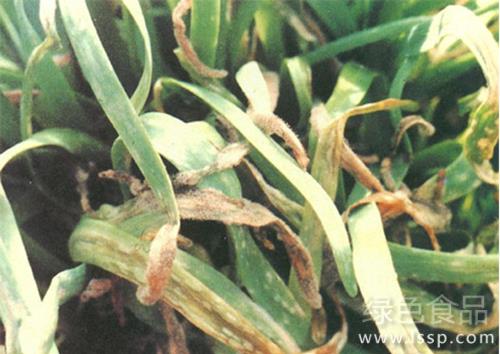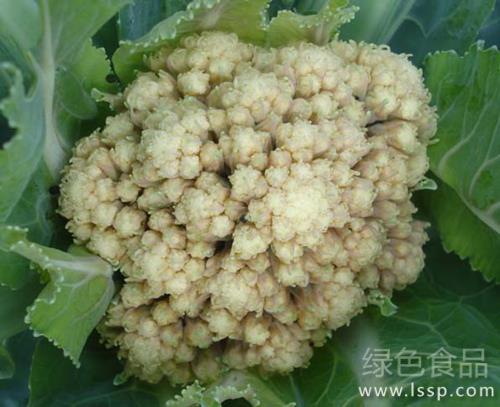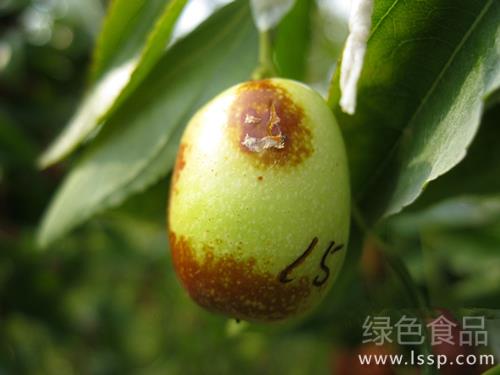Control methods of Botrytis cinerea of whole leaf withered leek after growing mildew layer
The "rotten leek" mentioned here is the phenomenon of local rot and dryness of leek leaves caused by pathogen infection. The cause of rotten leek may be leek blight or leek gray mold, but it is mainly leek gray mold at present.

Grey mold of leek
I. harmful symptoms
Botrytis cinerea is the most important disease in the production of Chinese chives in protected areas. When leek leaves are damaged, white to grayish brown dots are initially produced on the front or back of the leaves, generally more on the front than on the back. When wet, there is a sparse brown mildew layer on the surface of the lesion. In severe cases, the disease spots are connected into pieces, causing the upper half of the leaves or the whole leaves to scorch, and there is a gray-green to grayish-brown mildew layer on the withered leaves in the later stage. Sometimes it will rot down from the edge of the leek, showing a light green spot in the shape of a semicircle or "V" shape, with yellowish brown diseased tissue and a grayish brown to grayish green tomentose layer on the surface.
2. The route of transmission and the conditions of the disease
Botrytis cinerea of leek is caused by fungal infection. The pathogen overwintered in the soil in the form of sclerotia. Sclerotia germinate to produce spores, which spread by airflow. The growth temperature of the pathogen was 15-30 ℃, the optimum temperature for mycelium growth was 15-21 ℃, and 27 ℃ produced the most sclerotia.
III. Prevention and control methods
1. Disease-resistant varieties were selected.
2. Clean the countryside, clear out all the remaining branches and leaves in the plot, bury them deeply or burn them.
3. Strictly control the temperature (humidity). Controlling the temperature (humidity) is an effective measure to prevent Botrytis cinerea of leek. During the growth period of chives, the general air temperature should not exceed 23 ℃, and the night temperature should not be lower than 10 ℃. In the future, the temperature of each knife of Chinese chives can be raised by 2: 3 ℃, but it should not exceed 30 ℃. To control humidity, it is necessary to control not watering near the buckle film, pay attention to loosening the soil to reduce ground water evaporation, pay attention to ventilation and moisture discharge during the day, pay attention to heat preservation at night, and prevent excessive temperature difference between day and night to form foliar dew.
4. fumigation or dust control. Every 667 square meters, 250 grams of 3% thiabendazole smoke, or 250 grams of 10% carbendazim, 300 grams of carbendazim, ignite separately, seal the greenhouse, and smoke overnight. It can also be sprayed every 667 square meters with 1 kg of 5% carbendazim dust at a time, or 6.5% of bacteria and 1 kg of aldicarb dust, once every 7 days.
5. Spray prevention and cure. Spray with a 500-fold solution of 20% pink rust rather than wettable powder and prevent it once every 7 to 10 days. If leek is found to be infected with Botrytis cinerea, spray 1200 times of 40% dimethylpyrimidine suspension, 100 times of 50% Nongliling wettable powder, or 1000 times of 50% humeiling wettable powder + 50% prohydantoin wettable powder 1000-15000 times Or 40% carbendazim wettable powder 600 times liquid, or 50% benefit wettable powder 600 times liquid, or 78% metalaxyl manganese zinc 500 times liquid, or 50% isobaryl wettable powder 1000 times 1500 times liquid, once every 7 days, twice in a row.
- Prev

Control of common diseases of cauliflower in early flowering and non-heading autumn
Control of common diseases of cauliflower in early flowering and non-heading autumn
- Next

Comprehensive control measures of jujube rotten fruit disease with soft jujube meat and wine, smelly mildew and sour taste
Comprehensive control measures of jujube rotten fruit disease with soft jujube meat and wine, smelly mildew and sour taste
Related
- Fuxing push coffee new agricultural production and marketing class: lack of small-scale processing plants
- Jujube rice field leisure farm deep ploughing Yilan for five years to create a space for organic food and play
- Nongyu Farm-A trial of organic papaya for brave women with advanced technology
- Four points for attention in the prevention and control of diseases and insect pests of edible fungi
- How to add nutrient solution to Edible Fungi
- Is there any good way to control edible fungus mites?
- Open Inoculation Technology of Edible Fungi
- Is there any clever way to use fertilizer for edible fungus in winter?
- What agents are used to kill the pathogens of edible fungi in the mushroom shed?
- Rapid drying of Edible Fungi

